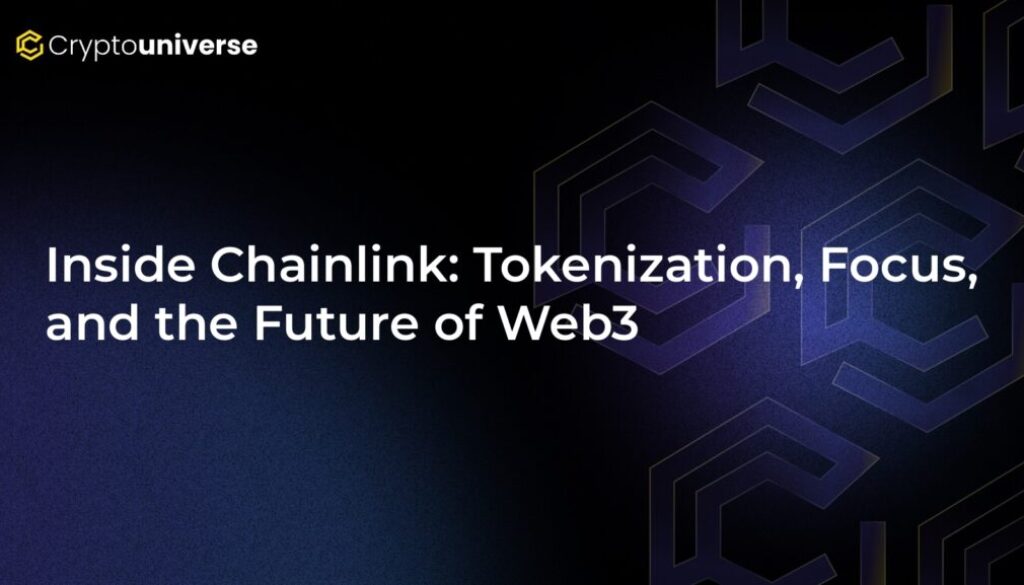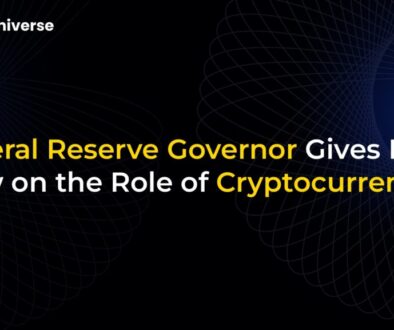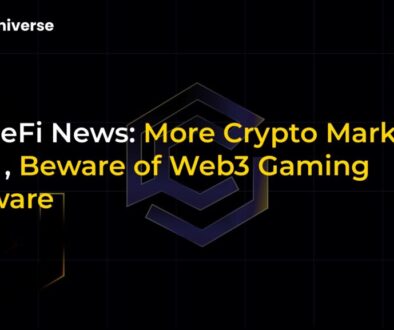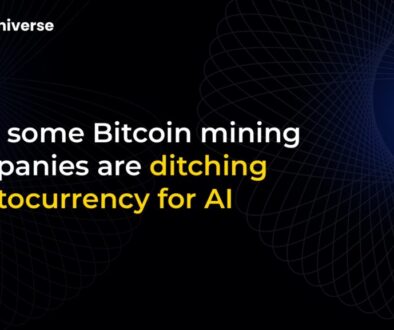Inside Chainlink: Tokenization, Focus, and the Future of Web3

The Unseen Engine of the Blockchain Revolution
In the fast-paced world of cryptocurrency, attention often gravitates towards new blockchains, explosive meme coins, and the latest DeFi protocols. Yet, beneath the surface, a critical piece of infrastructure is quietly powering the entire ecosystem, making what was once science fiction a tangible reality. That infrastructure is Chainlink. To truly understand where the industry is heading, we need to look
Chainlink isn’t just another crypto project; it’s a foundational layer aiming to connect the world’s blockchains to real-world data, events, and payment systems, creating a bridge between the old financial world and the new decentralized one.
First, What is Chainlink? A Quick Refresher
At its core, Chainlink solves one of blockchain’s most fundamental problems: the oracle problem. Blockchains are like secure, isolated vaults. They are incredibly good at verifying transactions within their own network, but they have no native way of knowing what’s happening in the outside world. They can’t access stock prices, weather data, sports scores, or interest rates on their own.
This is where Chainlink’s Decentralized Oracle Networks (DONs) come in. Imagine a committee of independent, trusted reporters who all watch a real-world event (like the price of Ethereum on major exchanges). They each report what they see, and the system uses their aggregated data to arrive at a single, highly reliable truth. This data is then fed to smart contracts on the blockchain, allowing them to execute based on real-world conditions.
This simple-sounding function is the key that unlocks countless advanced applications, from decentralized finance (DeFi) to parametric insurance and dynamic NFTs.
The Tokenization Tsunami: Bringing Trillions of Dollars On-Chain
One of the most significant trends in both crypto and traditional finance (TradFi) is the tokenization of Real-World Assets (RWAs). This refers to the process of creating a digital, blockchain-based representation of a physical or financial asset. Think of tokenizing things like:
- Real estate
- Stocks and bonds
- Fine art and collectibles
- Private equity
- Carbon credits
The potential market for RWAs is estimated to be in the hundreds of trillions of dollars. For this revolution to happen, these digital tokens need to be connected to reliable, real-world data about the assets they represent. A tokenized real estate fund needs to know property valuations. A tokenized bond needs to know current interest rates. This is where Chainlink’s work on
How Chainlink Powers RWA Tokenization
Chainlink provides the essential data infrastructure that makes RWAs functional and trustworthy:
- Price Feeds: These are the industry standard for providing accurate, tamper-proof price data for assets. They are crucial for lending, borrowing, and trading tokenized assets.
- Proof of Reserve (PoR): PoR allows a smart contract to verify that the off-chain reserves backing a token (like a stablecoin backed by fiat currency or a token backed by gold) actually exist. This builds transparency and trust, which is non-negotiable for institutional adoption.
- Cross-Chain Interoperability Protocol (CCIP): As assets become tokenized on various blockchains, they need a way to move and interact with each other. CCIP provides this secure bridge.
It’s no surprise that major financial players like SWIFT, BNY Mellon, and ANZ Bank are collaborating with Chainlink to explore and build the future of tokenized assets. They recognize that Chainlink provides the secure, reliable standard needed to bridge their existing infrastructure with the world of blockchain.
A Laser on Building the Standard
In an industry often distracted by hype cycles, Chainlink has maintained a clear and consistent focus: to become the global standard for blockchain data and interoperability. This mission is built on two pillars: Data and CCIP.
Pillar 1: Data and Computation
Chainlink continues to expand its oracle services, moving beyond simple price data. They offer a suite of services that allow smart contracts to access any kind of external data and even perform off-chain computations, including:
- Verifiable Randomness (VRF): A provably fair source of randomness for on-chain gaming, NFTs, and other applications.
- Automation: Formerly known as Keepers, this service allows smart contracts to be automatically triggered by specific events (e.g., liquidating a loan when it becomes undercollateralized).
- Data Streams: Ultra-low-latency data delivery designed for high-frequency DeFi applications.
Pillar 2: The Cross-Chain Interoperability Protocol (CCIP)
If oracles are about connecting one blockchain to the outside world, CCIP is about connecting all blockchains to each other. The current blockchain landscape is fragmented, with dozens of separate networks operating in silos. This creates fractured liquidity and a poor user experience.
CCIP aims to be the TCP/IP for blockchains. Just as TCP/IP created a universal standard for computers to communicate and form the internet, CCIP aims to create a universal standard for blockchains to communicate and transfer value, creating an “Internet of Contracts.”
Unlike many cross-chain bridges that have been prone to catastrophic hacks, CCIP is built with a defense-in-depth security model, including an independent Risk Management Network that constantly monitors for malicious activity. This unwavering
Crafting the : The Verifiable Web
When you combine Chainlink’s robust data services with its secure cross-chain protocol, a powerful vision for the future emerges: the Verifiable Web.
Today’s web is built on data and agreements that are often opaque and controlled by centralized entities. The Verifiable Web, powered by Chainlink, is a new paradigm where the data feeding our applications and the agreements governing our interactions are cryptographically guaranteed and transparently executed via smart contracts.
In this future:
- Finance is more transparent: You can verify the reserves behind a stablecoin in real-time.
- Insurance is automated and fair: A crop insurance smart contract automatically pays out to a farmer based on verifiable weather data from Chainlink oracles.
- Supply chains are trustworthy: Goods can be tracked on-chain, with their journey and authenticity verified at every step using real-world data.
- Global markets are borderless: A tokenized asset on one blockchain can be used as collateral for a loan on a completely different blockchain, seamlessly.
This isn’t a distant dream. The foundational blocks are being laid today, and Chainlink is at the very center, providing the critical connections that make this interconnected, verifiable world possible.
Conclusion: The Indispensable Link
While the spotlight may chase fleeting trends, the real, lasting value in the blockchain space is being built in the infrastructure layer. Chainlink has solidified its position as an indispensable part of this layer. By providing the secure data that smart contracts need, enabling the tokenization of the world’s assets, and creating a universal standard for cross-chain communication, Chainlink is not just participating in the evolution of Web3—it is actively defining it. The Internet of Contracts is coming, and it will be built on a foundation of verifiable data.


